ARCHITECTURAL PROJECTS
TEMPORARY
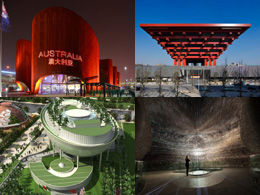
11 August, 2010
Shanghai Expo Pavillions 2
The theme of the World Expo 2010is "Better City - Better Life" (B Part)
Australian Pavilion
Architects: Wood Marsh + Think!OTS
The Australian pavilion has been designed to read in its surrounds as a bold sculptural form, both modern and organic. Set in a stark abstract landscape of the World Expo Site, the sensuous ribbon of the facade generates an undulating form which is designed to have no obvious front, rear or sides.
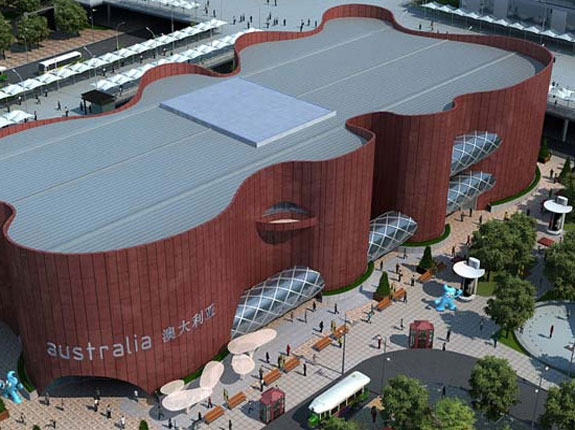
The prominent entry is articulated by a large glazed tear and illuminated signage. The form varies dramatically as one moves through the surrounding streets. Glazed tubular circulation ramps protrude in and out of the curving façade, providing interest and views for participants and intrigue for passers by. The singular materiality of the cladding reinforces the form, with the earthly tones of the Corten steel referencing the ubiquitous Australian landscape while the highly sculptural skin expresses the modernity and quality design of our cities.
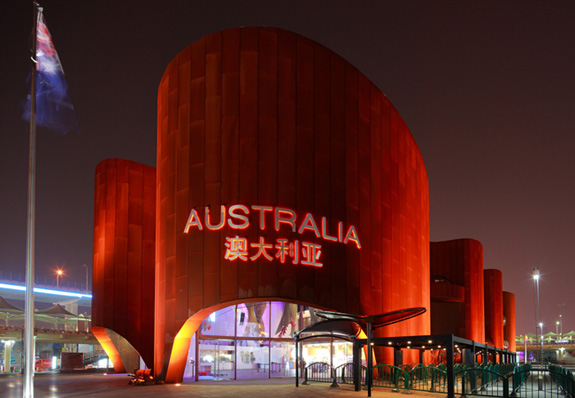
The continuous façade is broken with glazed tears that provide access and light. Internally the large performance space and ancillary functions are organised around a full height internal courtyard giving some drama to the spatial relationships within. The pavilion expresses the duality of the sparse Australian landscape and its densely populated urban centres.
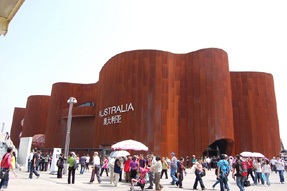
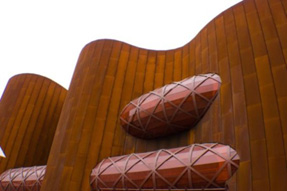
Info: http://www.architravel.com/architravel/building/680
China Pavilion
Architects: He Jingtang
Being the country that hosts the World Expo, the pavilion designed by Chinese architect He Jingtang stands in the central location of the Expo site at 63 meters tall, which triple the height of any other pavilion. The pavilion, in the shape of an oriental crown, is designed as the literal crowning glory of the Shanghai Expo which begins in May. Coloured in Forbidden City Red the structure represents the taste and spirit of Chinese culture.
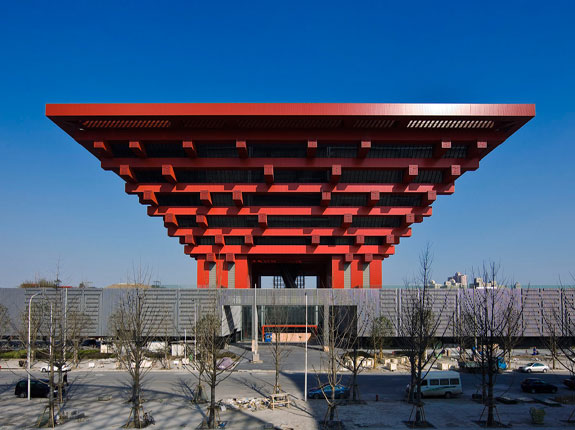
The main structure of the China Pavilion, "The Crown of the East," has a distinctive roof, made of traditional dougong or brackets, which has a history dating back more than 2,000 years. Below the main structure, there is a 45,000-square-meter joint pavilion featuring the displays from local provinces, cities and regions. 200 videos by students will be shown on 15 screens within the pavilion throughout the 5 month Expo following an open submittal programme where over 1,000 entries were received.
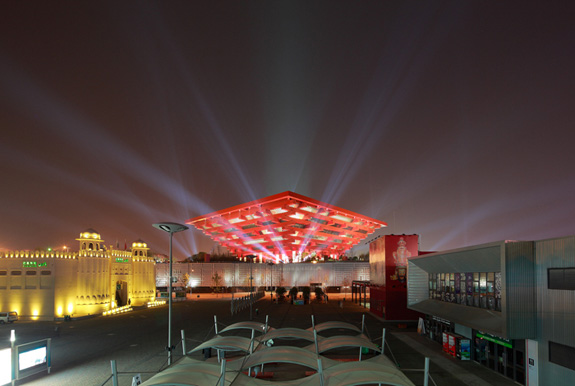
We must use modern architectural language to communicate. With the Dougong bracket and the 56 columns standing for 56 nationalities, (the pavilion) will strongly impress the visitors with the Chinese elements; engraved on the surface of the building are the nine folded scripts whose content can be the short names of China's provinces."He Jingtang"
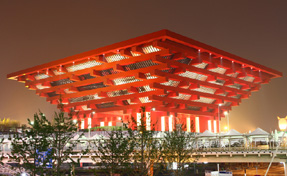
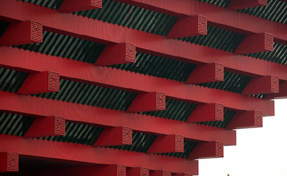
Info: http://www.architravel.com/architravel/building/627
Saudi Arabian Pavilion
Architect: Unknown
Covering a total area of 6,000 square meters, the Saudi Arabia pavilion features a fine centrepiece: a huge hanging boat shaped like a half moon. Many trees are planted on the top deck of the boat, creating a hanging garden, and thus epitomizing the oasis in the desert. The pavilion also boasts a 3D IMAX theatre that is larger than any other such theatre in the world.
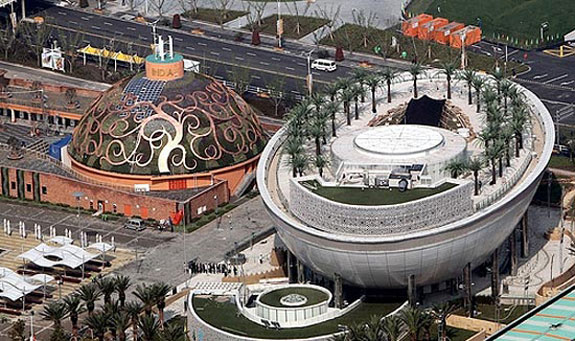
'Tents' are put up under the date trees for visitors to experience the feeling of 'living in a tent'. The top deck is also a good spot for a nice riverside view. Named 'the Arabian city' and with the theme of 'vitality for life', the Saudi Arabia pavilion showcases the Arabian wisdom in creating wonderful city life in spite of the severe natural environment without rivers or lakes. Highlights of its exhibition include four types of cities: the city of energy, the city of oasis, the ancient city with rich cultural heritage, and the city of fast-growth economy.
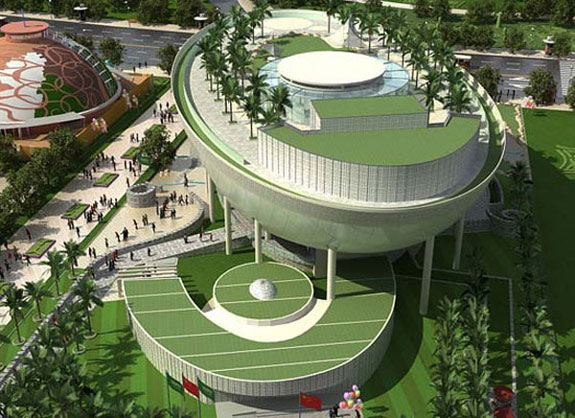
The first floor of the pavilion is a garden with both Chinese and Saudi trees growing, a symbol of the friendship between the two nations. Saudi Arabia, the homeland of the date palm tree, has reproduced the scene of an oasis in the desert by replanting palm trees on both the rooftop garden and the friendship garden at the ground level. The pavilion features a 2,000-square-meter cultural plaza where traditional cultural activities will take place.
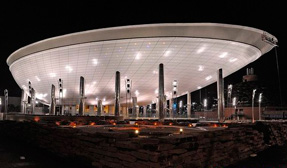
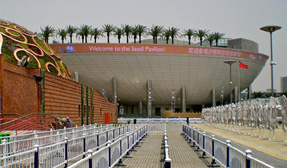
Dancers from all over Saudi Arabia will participate in dances and other activities within the plaza on a daily basis. The main entrance and exit of the pavilion form part of the pavilion hall, which features an enormous atrium with walls and fountains with rich Arabic geometrical latticework. Visitors have the chance to explore the historical silk road route as well as traditional crafts and special collections.
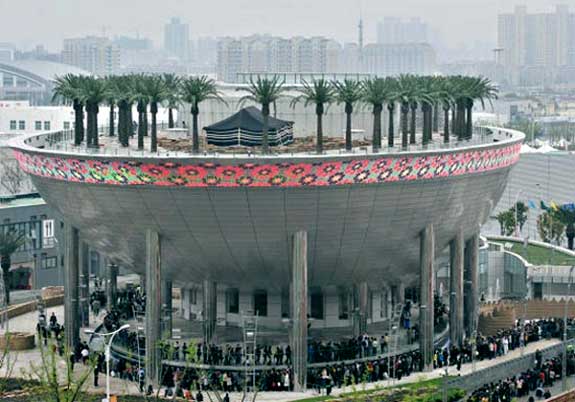
Info: http://www.architravel.com/architravel/building/695
UK Pavilion
Architect: Thomas Heatherwick
In September 2007, Heatherwick Studio, (lead architect Thomas Heatherwick), won a competition to design the UK Pavilion for the Shanghai Expo. With a team that includes Adams Kara Taylor and Atelier Ten, Heatherwick Studio created a design was set to incorporate elements of all four UK countries, with the focus on their capital cities - London, Cardiff, Belfast and Edinburg.
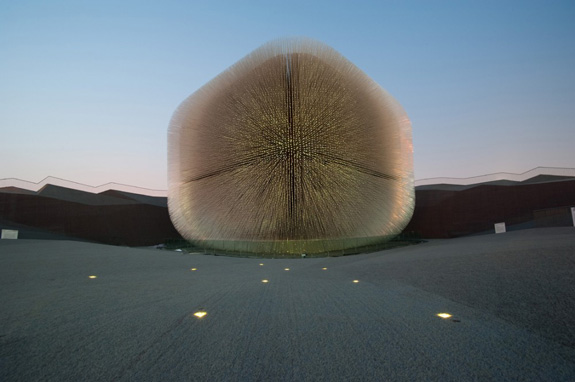
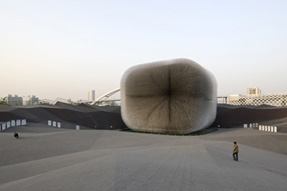
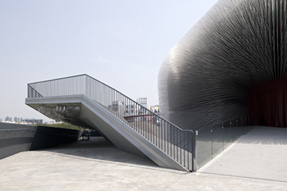
London is arguably one of the greenest cities in the world, with 40% greenery within its boundaries. Heatherwick Studio's design shines a light on the integration of urban landscape and the natural world throughout the UK. The UK Pavilion itself is designed to be composed of 60 000 thin, transparent, flexible rods, each at 7.5m in length. With such a sinuous structure, the rods will bend and sway in the slightest of breezes, creating the effect of hundreds of cilia. Inside each tube will be seeds, representing the UK's incorporation of nature into everyday life.
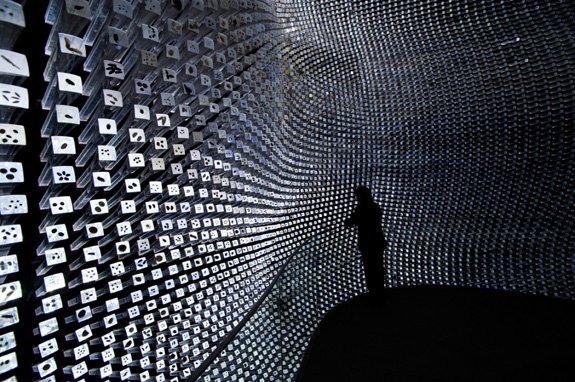
Due to the transparent nature of the extended rods, daylight will flood into the central room of the 'Seed Cathedral', whilst at night the exterior is designed to glow as the light filaments inside each tube begin to shine.
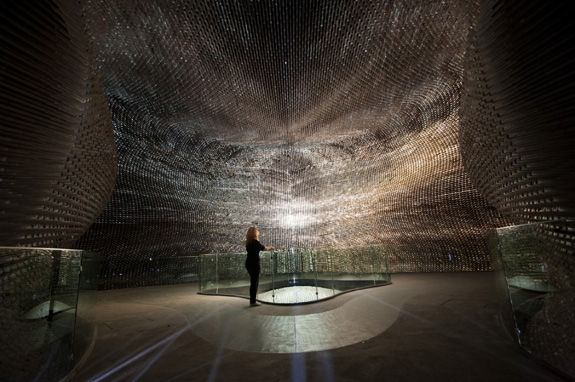
Πληροφορίες: http://www.architravel.com/architravel/building/628
USA Pavilion
Architect: Clive Grout
Positioned at the West Expo Gate in the Americas zone, the USA Pavilion covers a span of 6,000 square meters (60,000 square feet) and is one of the largest Pavilions at the Expo. In line with the Expo theme of "Better City, Better Life," this smart urban structure was designed by Clive Grout, an architect with World Expo experience.
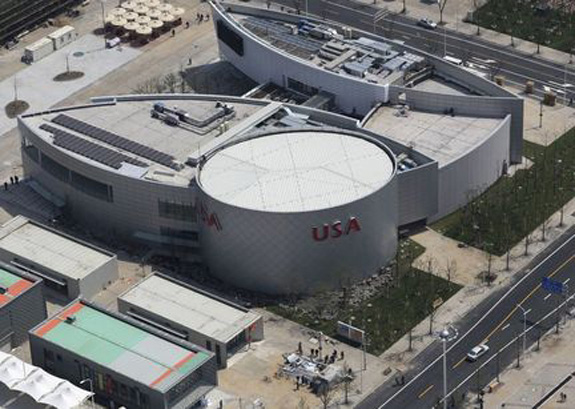
The architectural design of the US Pavilion also reflects the underlying theme of the USA Pavilion where guests will be given a glimpse of an American city of the future celebrating the success of "Rising to the Challenges" by providing clean energy, green spaces, clean water and rooftop gardens. In addition, state of the art technical features are implemented to ensure energy efficiency while highlighting the sustainability message of the Expo.
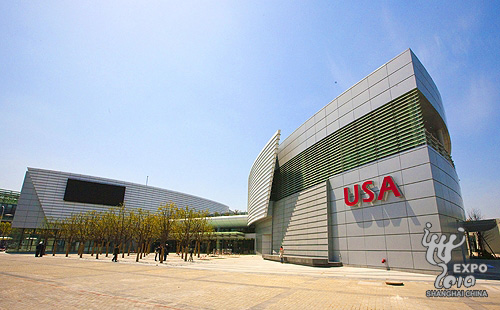
The USA Pavilion introduces nature to its compact, low-rise, urban scale development by including sustainable elements which contribute to greener urban future. For example, it features uniquely-designed waterfall and reflecting pool that cools the entrance area while masking sounds, and urban-planning foliage that add to the heat cooling effect, while contributing to a clean air habitat. The waterfall uses only recycled water.
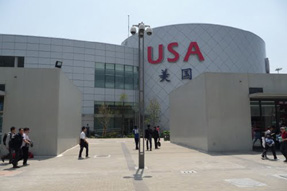
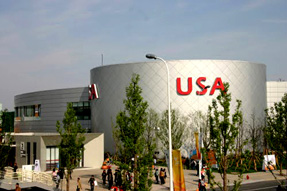
The USA Pavilion also features roof terraces with an urban vegetable garden that is modelled after Michelle Obama's garden at the White House. The green roof technology allows for additional heat cooling effect and slow release of rain-water runoff . Thematically, the bold and simple shape of the USA Pavilion shadows that of an eagle with open wings, a creature that is uninhibited by boundaries. It also serves as the national emblem for America, a country that offers limitless opportunities. Beyond the expression of opportunity, the eagle has been designed with its wings open as a gesture to welcome guests into the Pavilion.
Info: http://www.architravel.com/architravel/building/723
Maria Anagnostou, Anna Loukidou, Eva Aetopoulou (ArchiTeam)
Alexios Vandoros (advisor)
Related articles:
- Norway-Powered by Nature ( 26 September, 2011 )
- Shanghai Expo Pavillions ( 04 October, 2010 )
- Shanghai Expo Pavillions 3 ( 22 August, 2010 )










